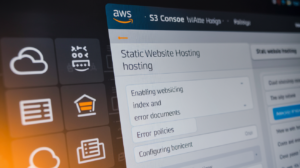Ever stared at your screen, wondering why your API choice is making your developers want to quit? You’re not alone. A recent survey showed 68% of tech leads regret their API architecture decisions within the first year.
I’m going to save you from that particular circle of developer hell.
By the end of this post, you’ll understand exactly how REST, GraphQL, gRPC and other API architecture styles stack up against each other in real-world applications. No theoretical fluff—just practical differences that impact your code, your team’s productivity, and your application’s performance.
The right API architecture choice can mean the difference between a system that scales elegantly and one that collapses under its own weight. But here’s what nobody tells you about the popular “REST vs. GraphQL” debate…
Understanding API Architecture Fundamentals
Why API Architecture Matters for Modern Applications
Gone are the days when any old API would do the job. In today’s interconnected world, choosing the right API architecture can make or break your application. It affects everything from performance and scalability to developer adoption and maintenance costs. The wrong choice might leave you refactoring code months down the road.
Key Factors to Consider When Choosing an API Style
Ever picked the wrong tool for a job and regretted it immediately? That’s what selecting an inappropriate API architecture feels like—but worse, because you’re stuck with it. Consider these critical factors before making your decision:
- Performance requirements: Does your app need lightning-fast responses or is moderate speed acceptable?
- Data complexity: Simple data needs? REST might work fine. Complex nested relationships? GraphQL could be your savior.
- Client diversity: Supporting mobile, web, and IoT devices requires different considerations than a single web app.
- Development resources: Some architectures require more specialized knowledge than others.
- Scalability needs: Will your API need to handle 10 users or 10 million?
The Evolution of API Design Approaches
API design has come a long way, baby. Remember when SOAP was all the rage? Those XML days seem ancient now.
The evolution tells a fascinating story:
| Era | Dominant Approach | Key Characteristics |
|---|---|---|
| Early 2000s | SOAP/XML-RPC | Rigid contracts, heavy payloads, complex implementations |
| 2010s | REST | Resource-focused, stateless, HTTP verbs, widespread adoption |
| Mid-2010s | GraphQL | Query flexibility, single endpoint, client-specified data |
| Recent Years | gRPC, WebSockets | Performance-optimized, streaming capabilities, specialized use cases |
Each new approach solved problems the previous ones couldn’t handle. We’ve shifted from server-dictated responses to client-controlled data fetching, and from request-response patterns to real-time communication.
How Architecture Choices Impact Developer Experience
Pick the wrong API architecture and watch your developers revolt. No joke.
Good developer experience isn’t just a nice-to-have—it’s essential for productivity and adoption. When evaluating options, consider:
- Learning curve: GraphQL might offer flexibility but requires new mental models for teams familiar with REST.
- Tooling ecosystem: REST’s maturity means abundant tools and libraries; newer approaches might lack comprehensive support.
- Debugging ease: Some architectures provide more intuitive debugging experiences than others.
- Documentation needs: Different architectures demand different documentation approaches to be truly usable.
- Implementation complexity: What seems elegant in theory might be a nightmare to implement and maintain.
Your developers will thank you (or curse you) based on this choice. The right architecture makes development feel smooth and intuitive; the wrong one turns simple tasks into frustrating puzzles.
REST: The Traditional Workhorse
Core Principles and Benefits of RESTful Architecture
REST isn’t just popular
GraphQL: Flexible Data Retrieval
GraphQL: Flexible Data Retrieval
A. Solving the Over-fetching and Under-fetching Problem
Ever tried getting exactly what you need from an API but ended up with a mountain of useless data? That’s over-fetching. Or maybe you had to make five separate calls just to build one screen? That’s under-fetching. GraphQL crushes both problems by letting you specify exactly what you want—nothing more, nothing less. One request, precisely the data you need. Game changer.
B. Schema-Driven Development Advantages
GraphQL schemas aren’t just documentation—they’re your development contract. When your frontend and backend teams speak the same language through a shared schema, magic happens. You get auto-completion in your IDE, type safety across your stack, and self-documenting APIs that tell you exactly what’s possible. No more guessing games about what endpoints return what data.
C. Performance Considerations and Optimization Techniques
GraphQL isn’t automatically faster than REST—it’s what you do with it that counts. Smart batching combines multiple requests into one. Persisted queries turn verbose GraphQL strings into tiny IDs. Caching strategies keep frequently accessed data lightning-fast. And careful resolver design prevents the dreaded N+1 query problem from tanking your database performance.
D. When GraphQL Outperforms Other Architectures
GraphQL shines brightest when your UI needs complex, nested data from multiple sources. Building dashboards with widgets pulling from different services? GraphQL’s your best friend. Working with a mobile app where every kilobyte matters? GraphQL lets you trim the fat. Need to iterate quickly on frontend features without backend changes? GraphQL gives you that freedom.
gRPC: High-Performance Communication
gRPC: High-Performance Communication
A. Protocol Buffers and Their Efficiency Benefits
Protocol Buffers are the secret sauce behind gRPC’s blazing speed. Unlike JSON’s text-based format that hogs bandwidth, Protocol Buffers serialize data into compact binary, slashing payload sizes by up to 70%. They enforce strict typing too, catching errors before they hit production and making your API bulletproof against the weird data gremlins that plague REST implementations.
B. Bi-directional Streaming Capabilities
Ever tried building real-time features with REST? It’s like fitting a square peg in a round hole. gRPC flips the script with bi-directional streaming—both client and server can push messages independently without waiting for responses. This isn’t just convenient; it’s revolutionary for applications like chat systems, live dashboards, or multiplayer games where milliseconds matter and connection overhead kills performance.
C. Ideal Use Cases for gRPC Implementation
gRPC shines brightest in microservice architectures where internal services need to communicate at lightning speed. Think about it—Netflix uses it to handle billions of daily requests between their services. It’s perfect for:
- Resource-constrained environments (IoT devices, mobile apps)
- Polyglot development teams (automatic client generation in 10+ languages)
- Low-latency systems where every millisecond counts
- High-throughput data processing pipelines
If your system needs to scale while keeping communication overhead minimal, gRPC is your best friend.
D. Integration Challenges in Existing Systems
Dropping gRPC into your legacy REST ecosystem isn’t all sunshine and rainbows. Browser support remains limited—you’ll need a proxy layer for web clients. The binary format that makes gRPC fast also makes it impossible to debug with standard tools like browser inspectors or curl. Plus, the learning curve is steeper than REST or GraphQL—your team needs to get comfortable with Protocol Buffers, streaming concepts, and different tooling.
E. Performance Metrics Compared to Other Styles
The numbers don’t lie—gRPC smokes the competition when performance matters:
| Metric | gRPC | REST (JSON) | GraphQL |
|---|---|---|---|
| Request size | 60% smaller | Baseline | 5-10% smaller |
| Response time | 3-8x faster | Baseline | 1.5-2x faster |
| Throughput (req/sec) | Up to 10x higher | Baseline | Up to 2x higher |
| CPU usage | 30-70% lower | Baseline | 10-20% lower |
For high-load systems, these aren’t just statistics—they translate directly to infrastructure savings and better user experiences.
WebSockets: Real-Time Data Exchange
WebSockets: Real-Time Data Exchange
Enabling Persistent Connections for Live Applications
WebSockets tear down the request-response barrier that traditional APIs impose. Unlike REST or GraphQL, WebSockets maintain an open connection, letting data flow instantly between server and client. This bidirectional channel shines in applications where milliseconds matter – think chat apps, live sports scores, or collaborative editing tools where users need real-time updates without refresh delays.
WebSocket vs. HTTP-Based API Architectures
HTTP-based APIs like REST work on a “ask and you shall receive” model. WebSockets flip the script entirely:
| Feature | WebSockets | HTTP-Based APIs |
|---|---|---|
| Connection | Persistent | New connection per request |
| Communication | Bidirectional | Client requests, server responds |
| Overhead | Initial handshake only | Headers with every request |
| Latency | Minimal after connection | Higher due to connection setup |
| Use Case | Real-time updates | CRUD operations |
The WebSocket handshake starts as HTTP but upgrades to a persistent TCP connection. This means once established, data flows without the overhead of repeated HTTP headers, drastically reducing latency for frequent updates.
Scaling Considerations for WebSocket Implementations
WebSockets create scaling challenges other architectures don’t face. Each open connection consumes server resources that persist until explicitly closed. This means:
- Connection management becomes critical – zombie connections can drain resources
- Server infrastructure needs careful configuration for concurrent connection handling
- Load balancing requires sticky sessions or connection sharing mechanisms
- Fallback strategies should be implemented for environments where WebSockets aren’t supported
Many developers underestimate the server-side implications of thousands of simultaneous open connections. Unlike stateless REST calls that complete and release resources, WebSocket connections hang around.
Combining WebSockets with Other API Styles
WebSockets don’t have to be an all-or-nothing choice. Smart API design often combines approaches:
- Use REST/GraphQL for standard CRUD operations and initial data loading
- Add WebSockets for real-time updates and notifications
- Implement event-based architecture where WebSockets deliver server events
- Consider Server-Sent Events (SSE) for one-way real-time updates with less overhead
This hybrid approach gives you the best of both worlds – the simplicity and wide support of HTTP-based APIs with the real-time capabilities of WebSockets where they truly add value.
Emerging API Styles and Patterns
AsyncAPI for Event-Driven Architectures
While REST handles request-response patterns beautifully, what about systems that communicate through events? Enter AsyncAPI. This specification is gaining massive traction for describing message-driven APIs and event-driven architectures. Think Kafka, RabbitMQ, and MQTT systems where publishers and subscribers need clear contracts.
SOAP’s Continued Relevance in Enterprise Settings
SOAP gets eye-rolls from modern developers, but guess what? It’s still powering critical enterprise systems worldwide. Its rigid contracts, built-in security features, and strong typing make it perfect for financial institutions, healthcare systems, and government agencies where compliance matters more than developer experience.
The Rise of Serverless and Function-Based APIs
Cloud providers changed the game with serverless offerings like AWS Lambda, Azure Functions and Google Cloud Functions. These function-based APIs let developers focus purely on business logic while the infrastructure scales automatically. No servers to manage means faster time-to-market and potentially lower costs.
Webhook Patterns for Efficient Notifications
Tired of constantly polling an API for updates? Webhooks flip the script by letting the API call YOU when something happens. This notification pattern dramatically reduces unnecessary requests and creates more responsive applications. Popular with payment processors, CRMs, and any service needing real-time updates.
Making the Right Architecture Choice
Making the Right Architecture Choice
A. Business Requirements Assessment Framework
Choosing an API architecture isn’t a one-size-fits-all game. You need to start by mapping your business needs against technical capabilities. What matters more – speed, flexibility, or ease of implementation? The best architecture aligns perfectly with what your users and business actually need, not what’s trending on tech Twitter.
Choosing the right API architecture is a critical decision that significantly impacts your application’s performance, scalability, and developer experience. Whether you opt for REST’s simplicity and widespread adoption, GraphQL’s flexible data querying, gRPC’s high-performance capabilities, or WebSockets’ real-time communication, each architecture style offers distinct advantages suited to different use cases. Emerging patterns continue to evolve, providing even more specialized solutions for modern application needs.
The ideal API architecture isn’t about following trends—it’s about aligning technology choices with your specific requirements. Consider your application’s performance needs, team expertise, client diversity, and future scalability when making your decision. Remember that hybrid approaches often provide the best solution, allowing you to leverage the strengths of multiple architectures where they make the most sense. By understanding the fundamental differences between these API styles, you can confidently select the architecture that will best support your application’s success.




















